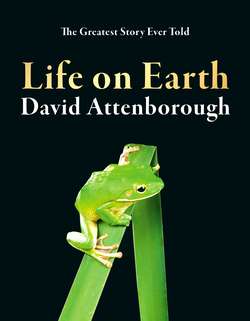Life on Earth

Реклама. ООО «ЛитРес», ИНН: 7719571260.
Оглавление
David Attenborough. Life on Earth
CONTENTS
Отрывок из книги
Cover
Title Page
.....
Life remained at this stage of development for a vast period. Then, around 2 billion years ago one single-celled life form found itself trapped inside another, in an entirely chance encounter. You can find examples of the kind of organisms it eventually produced in almost any patch of fresh water.
A drop from a pond, viewed through a microscope, swarms with tiny organisms, some spinning, some crawling, some whizzing across the field of vision like rockets. As a group they are often called the protozoa, or protists – the name means ‘first animals’, although they are now seen as a very disparate group, not all of which have any affinity with animals. They are all single cells, yet within their cell walls they contain much more complex structures than any bacterium possesses. One central packet, the nucleus, is full of DNA. This appears to be the organising force of the cell. Elongated bodies, the mitochondria, provide energy by burning oxygen in much the same way as many bacteria do. Many cells have a thrashing tail attached to them and this resembles a filamentous bacterium called a spirochete. Some also contain chloroplasts, packets of chlorophyll which, like blue-greens, use the energy of sunlight to assemble complex molecules as food for the cell. Each of these tiny organisms thus appears to be a committee of simpler ones. This, in effect, is what they are. The mitochondria are the descendants of the single-celled organism that was trapped some 2 billion years ago, say in June in the year of life, while the chloroplasts are descended from a trapped blue-green.
.....